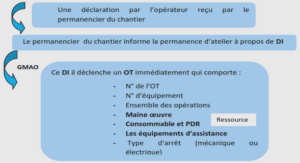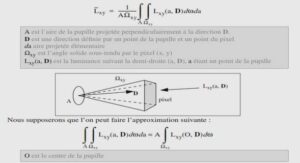FULL-SPACE IMPEDANCE LAPLACE PROBLEM
In this appendix we study the perturbed full-space or free-space impedance Laplace problem, also known as the exterior impedance Laplace problem in 3D, using integral equation techniques and the boundary element method. We consider the problem of the Laplace equation in three dimensions on the exterior of a bounded obstacle with an impedance boundary condition. The perturbed full-space impedance Laplace problem is not strictly speaking a wave scattering problem, but it can be regarded as a limit case of such a problem when the frequency tends towards zero (vid. Appendix E). It can be also regarded as a surface wave problem around a bounded threedimensional obstacle. The two-dimensional problem has been already treated thoroughly in Appendix B. For the problem treated herein we follow mainly Ned´ elec (1977, 1979, 2001) and ´ Raviart (1991). Further related books and doctorate theses are Chen & Zhou (1992), Evans (1998), Giroire (1987), Hsiao & Wendland (2008), Johnson (1987), Kellogg (1929), Kress (1989), Rjasanow & Steinbach (2007), and Steinbach (2008). Some articles that deal specifically with the Laplace equation with an impedance boundary condition are Ahner & Wiener (1991), Lanzani & Shen (2004), and Medkova (1998). The mixed boundary-value ´ problem is treated by Wendland, Stephan & Hsiao (1979). Interesting theoretical details on transmission problems can be found in Costabel & Stephan (1985). The boundary element calculations can be found in Bendali & Devys (1986). The use of cracked domains is studied by Medkova & Krutitskii (2005), and the inverse problem by Fasino & Inglese (1999) ´ and Lin & Fang (2005). Applications of the Laplace problem can be found, among others, for electrostatics (Jackson 1999), for conductivity in biomedical imaging (Ammari 2008), and for incompressible three-dimensional potential flows (Spurk 1997). The Laplace equation does not allow the propagation of volume waves inside the considered domain, but the addition of an impedance boundary condition permits the propagation of surface waves along the boundary of the obstacle. The main difficulty in the numerical treatment and resolution of our problem is the fact that the exterior domain is unbounded. We solve it therefore with integral equation techniques and the boundary element method, which require the knowledge of the Green’s function. This appendix is structured in 13 sections, including this introduction. The differential problem of the Laplace equation in a three-dimensional exterior domain with an impedance boundary condition is presented in Section D.2. The Green’s function and its far-field expression are computed respectively in Sections D.3 and D.4. Extending the differential problem towards a transmission problem, as done in Section D.5, allows its resolution by using integral equation techniques, which is discussed in Section D.6. These techniques allow also to represent the far field of the solution, as shown in Section D.7. A particular problem that takes as domain the exterior of a sphere is solved analytically in Section D.8. The appropriate function spaces and some existence and uniqueness results for the solution of the problem are presented in Section D.9. By means of the variational formulation developed in Section D.10, the obtained integral equation is discretized using the boundary element method, which is described in Section D.11. The boundary element calculations required to build the matrix of the linear system resulting from the numerical discretization are explained in Section D.12. Finally, in Section D.13 a benchmark problem based on the exterior sphere problem is solved numerically.
Direct perturbation problem
We consider an exterior open and connected domain Ωe ⊂ R 3 that lies outside a bounded obstacle Ωi and whose boundary Γ = ∂Ωe = ∂Ωi is regular (e.g., of class C 2 ), as shown in Figure D.1. As a perturbation problem, we decompose the total field uT as uT = uW + u, where uW represents the known field without obstacle, and where u denotes the perturbed field due its presence, which has bounded energy. The direct perturbation problem of interest is to find the perturbed field u that satisfies the Laplace equation in Ωe, an impedance boundary condition on Γ, and a decaying condition at infinity. We consider that the origin is located in Ωi and that the unit normal n is taken always outwardly oriented of Ωe, i.e., pointing inwards of Ωi .which is also satisfied by the fields uW and u, due linearity. For the perturbed field u we take also the inhomogeneous impedance boundary condition − ∂u ∂n + Zu = fz on Γ, (D.2) where Z is the impedance on the boundary, and where the impedance data function fz is assumed to be known. If Z = 0 or Z = ∞, then we retrieve respectively the classical Neumann or Dirichlet boundary conditions. In general, we consider a complex-valued impedance Z(x) depending on the position x. The function fz(x) may depend on Z and uw, but is independent of u. The Laplace equation (D.1) admits different kinds of non-trivial solutions uW , when we consider the domain Ωe as the unperturbed full-space R 3 . One kind of solutions are the harmonic polynomials in R 3 . There exist likewise other harmonic non-polynomial functions that satisfy the Laplace equation in R 3 , but which have a bigger growth at infinity than any polynomial, e.g., the exponential functions uW (x) = e a·x , where a ∈ C 3 and a 2 1 + a 2 2 + a 2 3 = 0. (D.3) Any such function can be taken as the known field without perturbation uW , which holds in particular for all the constant and linear functions in R 3 . For the perturbed field u in the exterior domain Ωe, though, these functions represent undesired non-physical solutions, which have to be avoided in order to ensure uniqueness of the solution u. To eliminate them, it suffices to impose for u an asymptotic decaying behavior at infinity that excludes the polynomials. This decaying condition involves finite energy throughout Ωe and can be interpreted as an additional boundary condition at infinity. In our case it is given, for a great value of |x|,
Green’s function
The Green’s function represents the response of the unperturbed system (without an obstacle) to a Dirac mass. It corresponds to a function G, which depends on a fixed source point x ∈ R 3 and an observation point y ∈ R 3 . The Green’s function is computed in the sense of distributions for the variable y in the full-space R 3 by placing at the right-hand side of the Laplace equation a Dirac mass δx, centered at the point x. It is therefore a solution G(x, ·) : R 3 → C for the radiation problem of a point source, namely ∆yG(x, y) = δx(y) in D ′ (R 3 ).
Far field of the Green’s function
The far field of the Green’s function describes its asymptotic behavior at infinity, i.e., when |x| → ∞ and assuming that y is fixed. For this purpose, we search the terms of highest order at infinity by expanding with respect to the variable x the expressions





